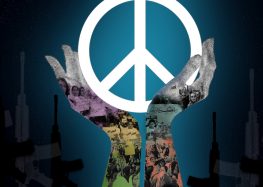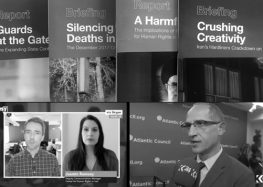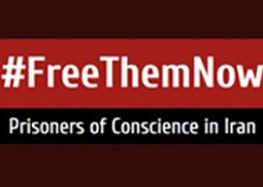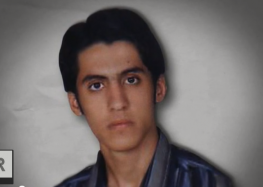Introduction: Human Rights Under Seige in Iran
Next: A Brief Summary of Major Human Rights Violations in Iran
Mahmoud Ahmadinejad’s coming visit to New York, for the opening of the 65th session of the United Nations’ General Assembly, will be his second visit to this city since the disputed election of June 2009 and his fifth trip to the United States. It is expected that he will be a center of international media attention, similar to his previous trips. Journalists will most likely seek his views on Iran’s nuclear program, economic sanctions by the UN Security Council, US-Iran relations, and the Middle East peace process.
Human rights in Iran, a subject of utmost importance for the security and future of the Iranian people and their neighbors in the Middle East, also deserves extended coverage. The International Campaign for Human Rights in Iran is urging journalists to make human rights concerns a major component of their interviews with Ahmadinejad.
Iran’s human rights crisis has worsened considerably since the June 2009 election. Iranian media are tightly controlled by the government and subjected to heavy censorship. Most independent journalists are in jail or have been forced into exile. While Iranian journalists have no opportunity to hold Ahmadinejad accountable for Iran’s human rights crisis, it is critical that when he travels
abroad, particularly during his visit to New York, the international media give top priority to Iran’s human rights crisis.
Fifteen months after the beginning of the government’s brutal crackdown of post-election protestors, nearly five hundred prominent civil society activists, journalist, students, women’s rights defenders, and reformist politicians remain behind
bars. Many have been sentenced to years in prison, others remain in legal limbo.
The Campaign’s review of two dozen interviews of Ahmadinejad by foreign media shows that prior to the 2009 presidential election the
situation of human rights in Iran was largely overshadowed by three topics: Ahmadinejad’s denial of the Holocaust (or challenges of historical accounts); his remarks on Israel’s right to existence; and finally Iran’s nuclear program. However, in most interviews, the media did not ask any questions about Iran’s human rights situation.
Since the post-election crackdown of the last fifteen months, an increasing number of media interviews with Ahmadinejad have focused on human rights violations in Iran. After analyzing dozens of these interviews, the International Campaign for Human Rights in Iran has highlighted trends, patterns, and arguments related to the coverage of human rights issues.
We hope this document will help journalists who interview Mahmoud Ahmadinejad —or other senior Iranian government officials—frame pertinent questions about Iran’s human rights situation, including the lack of freedom of speech and assembly, media censorship, political executions, stoning of women, and many other egregious abuses described below. Iran’s nuclear program has been the center of the international community’s attention in view of its impact on international security, the dangers it might pose to the non-proliferation movement and regional as well as global instability. But it should also be noted that one of the primary goals of Iran’s nuclear development project and associated conflicts is to divert attention from its repression of citizens and movements that seek harmony with the international community through respect for international standards.
We strongly believe in the role of the international media as a force to shed light on incidents that transform individual lives and whole societies. Were it not for the courageous people who risked their lives to send pictures and videos of Iran’s postelection violence, and for the international media’s responsible coverage of these events, more people would have undoubtedly died on the streets of Tehran and other cities. We hope this Reporters’ Guide will facilitate continued accurate coverage of Iran’s human rights crisis.
Back to Main —————————-——————————————————– Next




